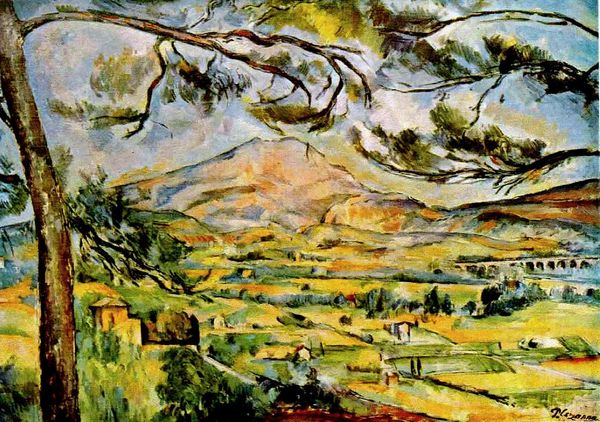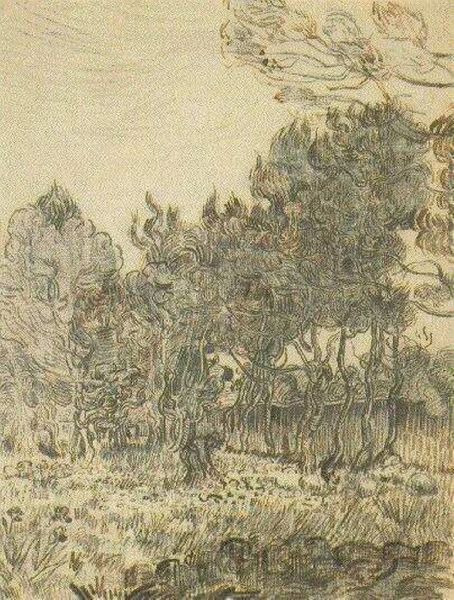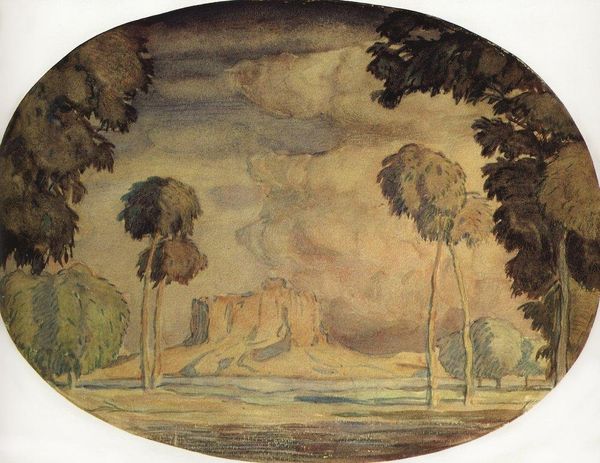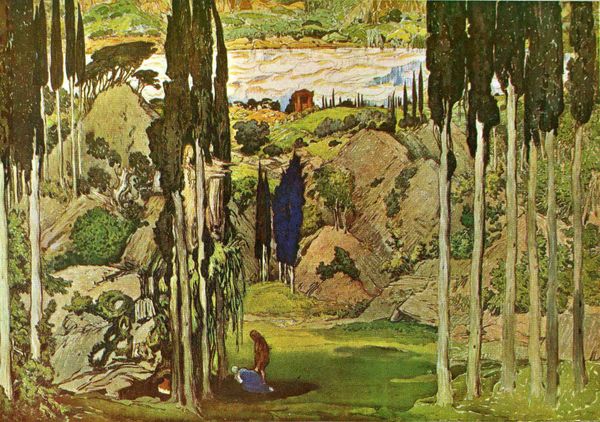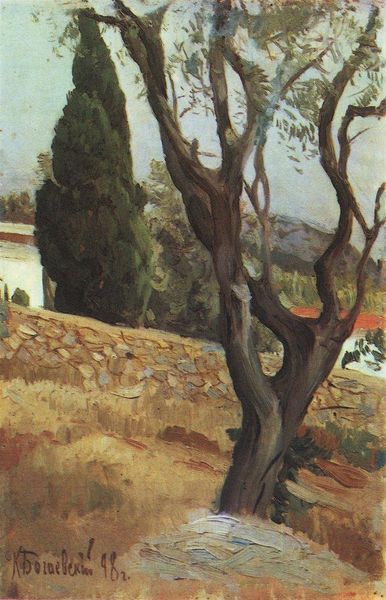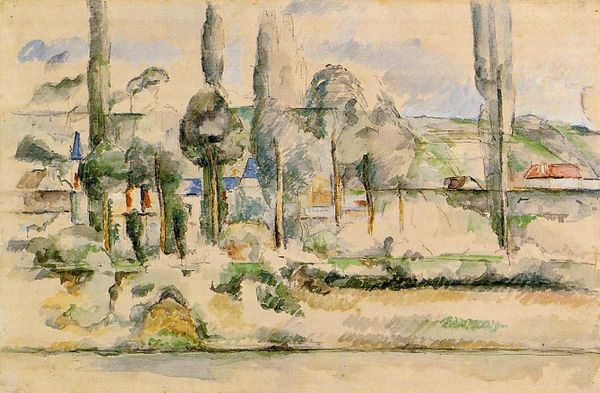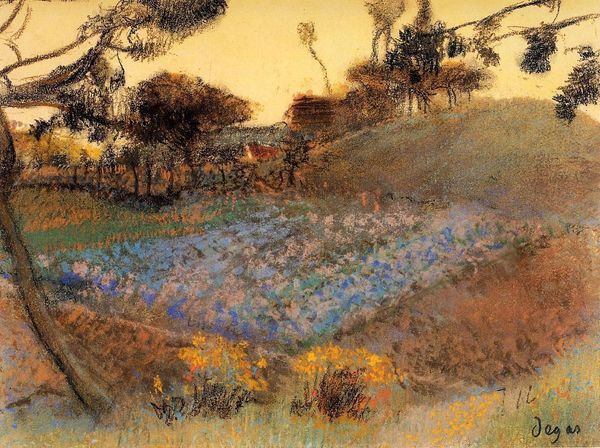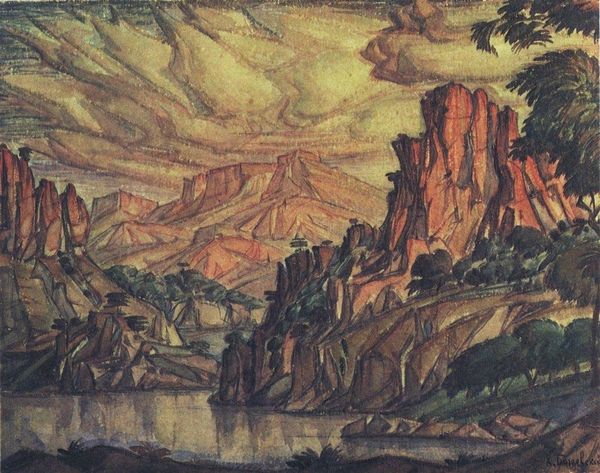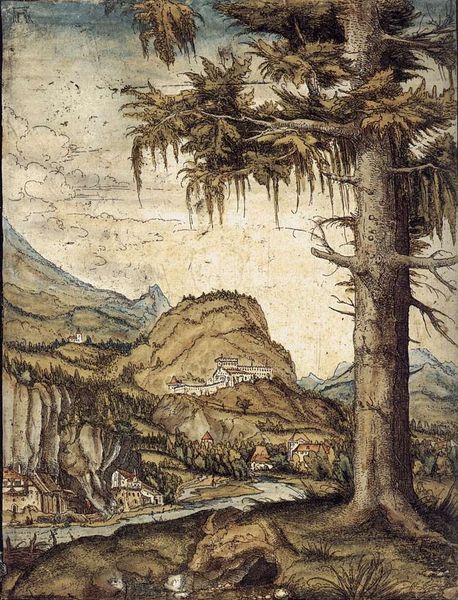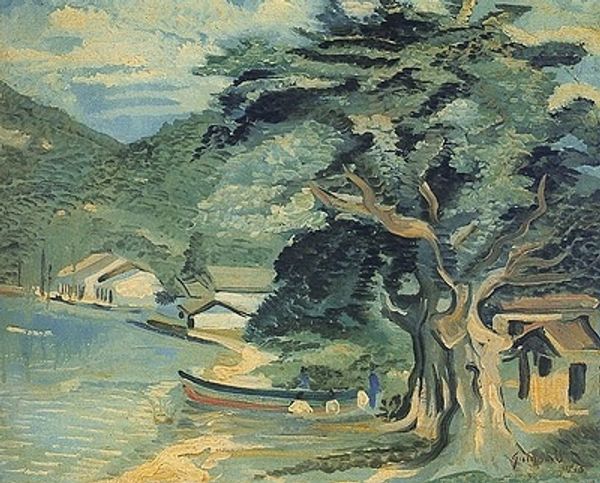
mixed-media, painting
#
tree
#
mixed-media
#
art-nouveau
#
painting
#
landscape
#
oil painting
#
sketch
#
mixed media
Copyright: Public domain
Editor: Here we have Léon Bakst's 1912 mixed-media work, "Helene de Sparte set design." I'm immediately drawn to the stark contrast between the foreground and background, it’s quite dreamlike, actually. What symbols or meanings do you find in this piece? Curator: Bakst's imagery resonates with layers of historical and cultural weight. Notice the solitary hut; in dreams and myths, a hut or cottage is the maternal refuge or primal shell of renewal. It offers security, yet its vulnerability also implies a necessary shedding and transformation. Editor: That's a fresh perspective. I was stuck on it representing the domestic sphere. Curator: Indeed, and doesn’t the setting also remind you of Arcadia? The figures would feel at ease amongst the rough-hewn trees. Bakst is calling to mind classical pastoral settings. In essence, it represents something far removed and pure for audiences of the era. What does that make you consider? Editor: Well, that explains why it seemed almost like a lost paradise… I suppose it invites us to yearn for a simpler past? It's both attractive and, somehow, a little sad. Curator: Exactly! The figures on stage in “Helene de Sparte” are forever trying to recreate that perfection; through their clothing and actions on stage. The design, thus, reminds us of a dream of Arcadia rather than the thing itself. A painting filled with loss is still very emotionally powerful. Editor: I see now. Thanks! It is amazing how much cultural significance and longing can be packed into one stage design. Curator: It's a testament to how visual symbols carry and transmit our collective memory, shaping our understanding across time. It reminds me that every design has many doors!
Comments
No comments
Be the first to comment and join the conversation on the ultimate creative platform.
